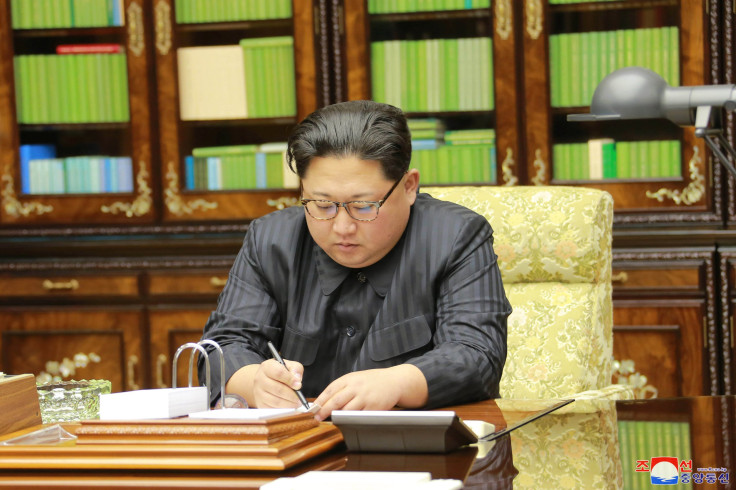North Korea Claims It Can Nuke Anywhere in The US, Experts Aren't Sure

North Korea launched a third intercontinental ballistic missile (ICBM) Tuesday and the country’s leader Kim Jong Un claimed that he can hit anywhere in the U.S. with a nuclear warhead. Some experts, however, are unsure.
“Kim Jong Un declared with pride that now we have finally realized the great historic cause of completing the state nuclear force, the cause of building a rocket power,” announced Ri Chun-Hee on North Korean state television Tuesday.
The missile was North Korea’s highest launch and had the longest projected reach of any missile they have ever fired. ICBMs are launched into space, and then they re-enter the atmosphere to drop their payload on their target. The missile flew 10 times higher than the international space station, according to the Washington Post.
“It went higher, frankly, than any previous shot they’ve taken,” said Defense Secretary Jim Mattis Tuesday at the White House. “The bottom line is, it’s a continued effort to build a threat — a ballistic missile threat that endangers world peace, regional peace, and certainly, the United States.”
Designated the Hwasong-15, Tuesday’s missile was a marked improvement over the missiles North Korea fired in July and scientists believe that the entire U.S. is theoretically within range with the new missiles.
David Wright, a scientist at the Union of Concerned Scientists, believes that the new missile could hit Washington, D.C., or anywhere else in the U.S.
“It’s pretty impressive,” Wright saID to the New York Times. “This is building on what they’ve done before. It’s muscle-flexing to show the U.S. that they’re going to continue to make progress.”

Where experts doubt North Korea’s claims, is whether their missiles could actually deliver a nuclear warhead to everywhere in the U.S. Some experts believe the distance the rocker flew was aided by a lighter mock warhead. Wright told the Times that the latest test might not signal the distance North Korea could actually launch a nuclear weapon.
Some scientists say that North Korea hasn’t quite solved problems with its missile re-entry.
“The test was North Korea’s effort to examine and confirm its updated technology,” said Kim Dong-yup, a professor at Kyungnam University’s Far East Institute to the Korea Herald. “It seems North Korea has failed to acquire the missile’s atmospheric re-entry technology [this time].”
Yang Mu-jin, a professor at the University of North Korean Studies told the Korean Herald it appears as if the reentry on Tuesday’s missile failed.
“The new missile’s altitude of 4,500 kilometers can be interpreted as North Korea’s success in securing sufficient range,” said Yang. “But the Japanese media reported that they saw three projectiles fall into the waters nearby, which strongly indicates that it had not succeeded in re-entering the earth’s atmosphere.”
The U.S. has been surprised in the past by the technological prowess of North Korea’s missile and nuclear programs and the speed at which they have gotten there. Jeffrey Lewis, Director of the East Asia Nonproliferation Program at the Middlebury Institute of International Studies posted on Twitter an August op-ed he wrote for the Times that claimed a nuclear North Korea is now just a reality.
“I meant every word of this on August 3 and I mean every word today. We don't have to like it, but we're going to have to learn to live with North Korea's ability to target the United States with nuclear weapons,” Lewis posted on Twitter.
I meant every word of this on August 3 and I mean every word today. We don't have to like it, but we're going to have to learn to live with North Korea's ability to target the United States with nuclear weapons. https://t.co/HBGwp9yE3b
— Jeffrey Lewis (@ArmsControlWonk) November 28, 2017
© Copyright IBTimes 2025. All rights reserved.





















